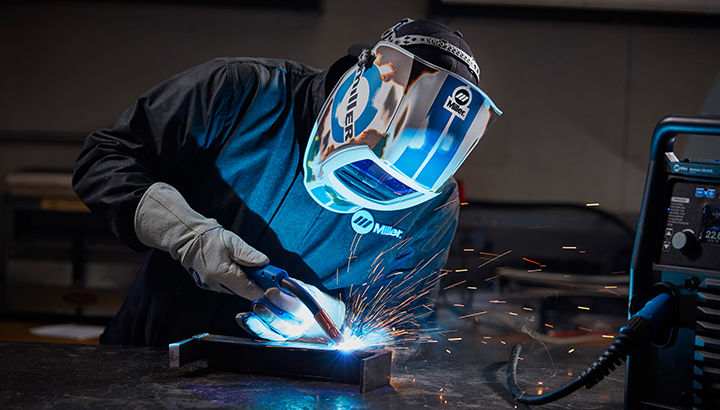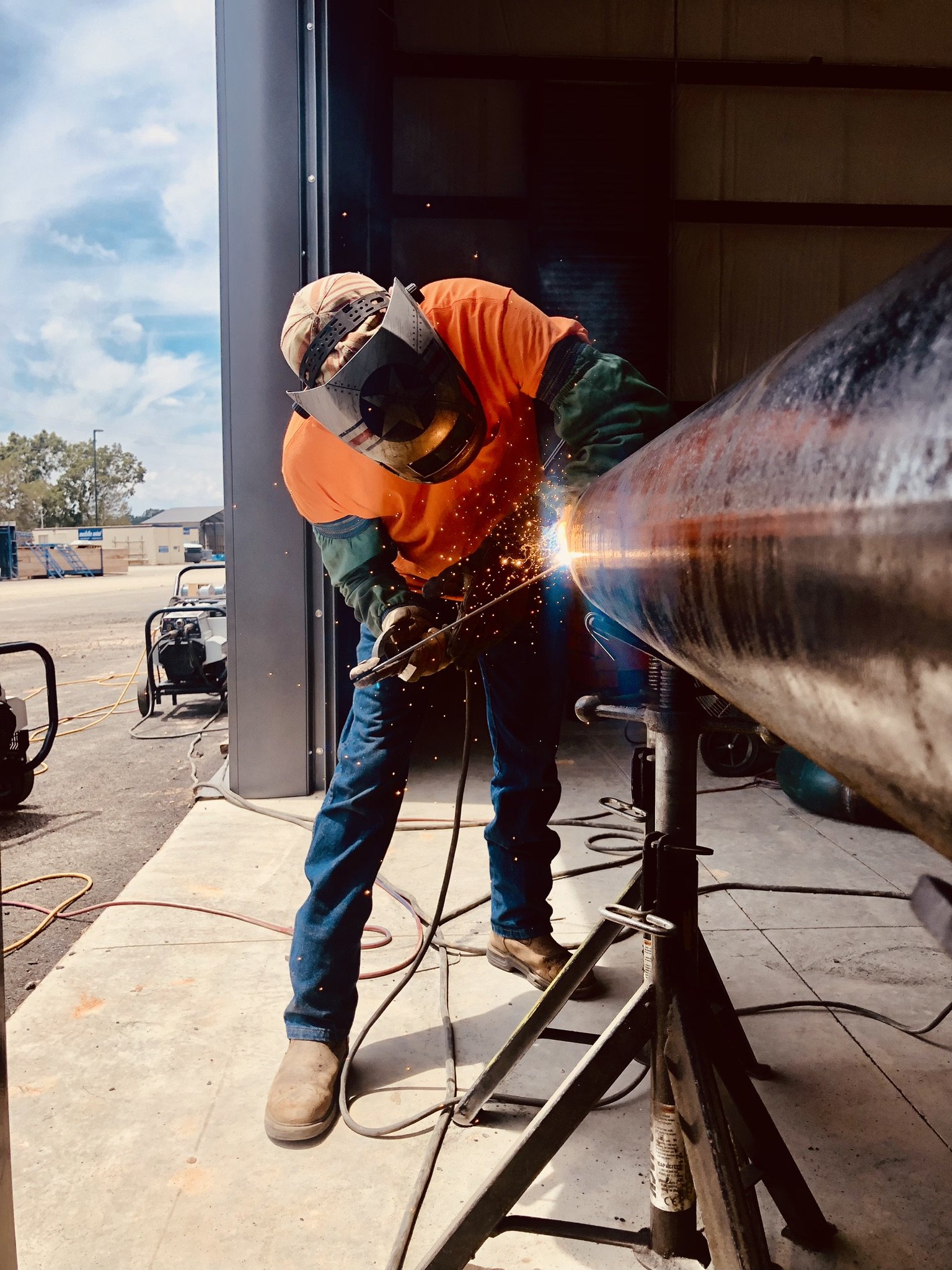Proven steps to eliminate porosity in welds with Belgrade Welding
Wiki Article
Usual Welding Repair Service Issues and How to Address Them Properly
Welding repairs frequently experience an array of concerns that can jeopardize the honesty of the end product. Common troubles consist of inadequate infiltration, porosity, and imbalance, amongst others. Each defect offers unique challenges that call for certain approaches for resolution. Recognizing these concerns is important for welders intending to boost their results and abilities. This discussion will discover these typical welding fixing concerns and reliable approaches to address them.Insufficient Penetration
Poor penetration happens when the weld metal falls short to fully fuse with the base product, resulting in weak joints and prospective architectural failures. This concern usually originates from not enough heat input, inaccurate electrode angle, or improper welding rate. Welders may encounter inadequate infiltration as a result of a mistake of the required criteria for a certain product density or type. Furthermore, contamination on the base product's surface can impede effective bonding, aggravating the problem. To deal with insufficient infiltration, welders must ensure suitable setups on their equipment and preserve a tidy work surface area. Routine inspection of welds is suggested to recognize any kind of deficiencies early, permitting prompt improvements and the prevention of endangered structural honesty in welded assemblies.Porosity
Porosity is an usual problem in bonded joints that manifests as small gas bubbles trapped within the weld steel. This problem can compromise the stability of the weld, leading to decreased strength and possible failure under anxiety. Welding. Porosity usually arises from contamination, dampness, or inappropriate welding strategies, which enable gases to run away right into the molten weld pool. To deal with porosity, welders ought to guarantee proper surface preparation, keep a tidy working atmosphere, and use ideal welding parameters. In addition, picking the ideal filler material and shielding gas can minimize gas entrapment. Routine evaluation and screening of welds can help identify porosity early, ensuring prompt corrective activities are taken, therefore preserving the top quality and integrity of the bonded structureMisalignment
Imbalance in welding can occur from various variables, consisting of inappropriate setup and thermal growth. Comprehending the origin causes is vital for efficient resolution. Numerous improvement methods are readily available to straighten elements and ensure structural stability.Reasons for Imbalance
Welding imbalance commonly comes from a selection of underlying concerns that can endanger structural integrity. One main cause is inappropriate fit-up of components before welding, which can cause gaps and irregular surface areas. Variations in thermal development during the welding process can additionally lead to distortion, especially if the products being signed up with have different coefficients of expansion. Additionally, insufficient fixturing and clamping might fail to hold components firmly in place, leading to activity during welding. Poorly kept tools, consisting of welding equipments and tools, may present disparities in the weld grain, further adding to imbalance. Driver error, stemming from inadequate training or experience, can additionally play a significant duty in developing misaligned welds.
Correction Strategies Offered
Attending to imbalance effectively needs a combination of restorative techniques tailored to the details issues at hand. One usual method is the usage of fixtures or jigs to hold elements in the right position during welding, ensuring regular placement. In addition, preheating the materials can help in reducing distortion and enhance fit-up. For significant imbalance, mechanical realignment strategies, such as utilizing hydraulic jacks or clamps, can be utilized to remedy the setting prior to welding. Post-weld warmth treatment may also be required to ease anxieties triggered by imbalance. Cautious inspection and change throughout the arrangement phase can avoid imbalance concerns from coming to be considerable issues, promoting a smoother welding process and improving general structural integrity.Distortion
Distortion is a common challenge in welding that can emerge from various aspects, including unequal heating & cooling. Understanding the causes of distortion is necessary for executing effective avoidance methods. Resolving this issue not just enhances structural honesty but also enhances the general quality of the weld.Sources of Distortion
When subjected to the extreme warm of welding, materials typically undergo changes that can result in distortion. This phenomenon mainly arises from thermal expansion and tightening throughout the welding procedure. As the weld area warms up, the product expands; upon cooling, it acquires, which can create inner stresses. In enhancement, unequal heating across a work surface can worsen these stresses, causing bending or flexing. The sort of product likewise plays a substantial role; metals with varying thermal conductivity and coefficients of expansion may react in different ways, resulting in unforeseeable distortions. Bad joint layout and poor fixturing can contribute to imbalance throughout welding, enhancing the probability of distortion. Recognizing these causes is important for reliable welding repair service and avoidance approaches.Prevention Techniques
Efficient prevention techniques for distortion throughout welding focus on controlling warm input and ensuring correct joint design. Keeping a consistent warmth input aids to minimize thermal development and tightening, which can cause distortion. Using methods such as pre-heating the work surface can likewise minimize the temperature level gradient, advertising uniform home heating. Additionally, selecting suitable joint styles, such as T-joints or lap joints, can improve security and lower stress and anxiety focus. Applying proper fixturing to secure the workpieces in position additionally aids in keeping alignment throughout the welding procedure. Staggered welding sequences can distribute warm more uniformly, preventing local distortion. By applying these methods, welders can significantly lower the likelihood of distortion and boost the general high quality of their welds.Cracking
Cracking is a common problem come across in welding repairs, usually arising from numerous elements such as incorrect air conditioning prices, material choice, or insufficient joint prep work. The event of fractures can considerably jeopardize the integrity of the weld, leading to potential failings throughout procedure. To resolve this issue, welders have to first evaluate the source, making certain that products are compatible and properly picked for the certain application. Furthermore, controlling the air conditioning price throughout the welding procedure is crucial; quick air conditioning can generate stress and anxiety and bring about cracking. Correct joint style and preparation likewise add to decreasing the threat. Carrying out these techniques can improve weld high quality and longevity, eventually lowering the probability of breaking in finished weldments.
Insufficient Blend
A substantial concern in welding repair work is incomplete combination, which happens when the weld steel does not properly bond with the base material or previous weld passes - Montana Mobile Welding and Repair. This problem can lead to weak points in the joint, potentially jeopardizing the integrity of the welded structure. Factors adding to incomplete blend include insufficient warmth input, incorrect welding technique, and contamination of the surfaces being joined. To address this concern effectively, welders must guarantee correct pre-weld cleaning and surface preparation, in diesel welder addition to readjust their welding parameters to accomplish sufficient infiltration and blend. Regular assessment throughout the welding process can additionally help determine insufficient combination early, allowing for prompt rehabilitative procedures to improve the total top quality of the weldOverheating
While welding repair work can enhance structural integrity, overheating provides a significant difficulty that can bring about product destruction. Excessive warm throughout welding can modify the mechanical residential or commercial properties of steels, resulting in minimized toughness, enhanced brittleness, and bending. This sensation is specifically important in high-stress applications where structural dependability is extremely important. Recognizing getting too hot can include visual examinations for staining or distortion, in addition to checking temperature during the welding procedure. To alleviate the dangers connected with getting too hot, welders need to employ appropriate techniques, such as managing warm input, adjusting traveling rate, and utilizing suitable filler products. Furthermore, applying pre- and post-weld warm treatments can assist recover material homes and enhance the overall top quality of the repair service, making certain long-lasting performance and security.Often Asked Concerns
What Are the Common Indicators of a Welding Problem?

Just How Can I Examine My Welds for Quality?
To test welds for quality, one can utilize visual examinations, ultrasonic screening, and radiographic methods. Each method guarantees structural integrity, recognizes problems, and confirms adherence to defined requirements, inevitably improving the reliability of the bonded joints.What Safety and security Precautions Should I Take While Welding?
When welding, one must imp source focus on safety by using ideal individual safety equipment, ensuring correct ventilation, protecting flammable products away, keeping a tidy work area, and being mindful of environments to stop mishaps and injuries.Can I Repair a Weld Without Redesigning the Entire Joint?
Repairing a weld without remodeling the entire joint is feasible, depending on the damages (Montana Mobile Welding and Repair Welding). Techniques such as grinding, adding filler product, or using a welding procedure can efficiently attend to particular flaws while preserving the bordering structureWhat Devices Are Important for Efficient Welding Services?
Crucial devices for efficient welding repair services consist of a welding device, wire brush, mill, safety equipment, clamps, and filler products. Each tool plays an essential role in making certain high quality and safety throughout the repair service procedure. Porosity commonly arises from contamination, wetness, or incorrect welding techniques, which permit gases to run away into the molten weld pool. Badly maintained devices, consisting of welding machines and tools, might present variances in the weld grain, more adding to misalignment. When subjected to the intense warmth of welding, products usually undergo try this out modifications that can lead to distortion. Breaking is a common concern experienced in welding repairs, commonly resulting from different elements such as inappropriate air conditioning rates, material option, or insufficient joint prep work. A considerable problem in welding repair work is incomplete combination, which occurs when the weld metal does not appropriately bond with the base material or previous weld passes.Report this wiki page